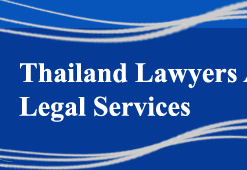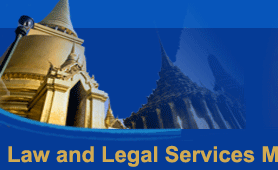



    |
|
| |
|
Open Regionalism and Deeper Integration: The Implementation of ASEAN Investment Area (AIA) and ASEAN Free Trade Area (AFTA)
Part 7
The First Two Pillars: Co-operation and Facilitation, and Promotion and Awareness
The ASEAN Plan of Action on Co-operation and Promotion of Foreign Direct Investment and Intra-ASEAN Investment was initially endorsed at the fifth ASEAN Summit in Bangkok 1995 when the decision to establish AIA was adopted. It was further elaborated by the AHIA Meeting in July 1998. The plan of action contains various measures for investment facilitation and promotion. They include joint promotional seminars and activities to attract foreign direct investment; joint promotion to attract FDI in higher technological-based industries and high value-added activities; joint publications on investment regulations, policies, procedures and opportunities to further enhance the transparency of ASEAN's investment regime; simplification of ASEAN countries' investment procedures; joint training programs for ASEAN's investment officials on investment promotion; and closer co-operation among ASEAN investment agencies through exchange of investment data and information; and updates on any policy changes. ASEAN Investment co-operation work programs
(51)will help to implement the ASEAN Plan of Action on Co-operation and Promotion of Foreign Direct Investment and intra-ASEAN Investment. Among these work programs are the linking of ASEAN member countries' homepages to the ASEANWEB; joint promotion events within and outside ASEAN, and human resource development. The Taskforce on the collection and reporting of FDI statistics was set up by the AHIA, to provide a comparable approach to measuring, collecting and reporting of FDI statistics for monitoring the progress and development of the ASEAN Investment Area. The Work Programs also include a compilation of measures taken and incentives provided by member countries in promoting FDI that will be published to assist the private sectors in their investment decision-making processes. In conjunction with the signing of the Framework Agreement on AIA and to facilitate FDI flows into the region, the AHIA agreed that three major projects be launched(52):
1) ASEAN Supporting Industrial Database (ASID) for supporting industries for manufacturers and suppliers of ASEAN countries
(53);2) Directory of ASEAN-owned Technology Suppliers for facilitating intra-ASEAN sourcing of technology, enhancement of investment match-making, promotion of joint venture operations and to provide opportunities to technology suppliers in the region to supply technology to third countries;
3) Compendium on investment Policy and Measures of ASEAN countries for providing general information on investment policies and measures of the members.
The work programs include, among others, joint training programs, high level strategic planning meeting, a protocol to amend the ASEAN Agreement for the promotion and Protection of Investment
(54), and a comprehensive survey on the promotion of FDI into and within ASEAN. Furthermore, it established the ASEANWEB, which links the websites among its member countries' investment networks, to provide investment information in order to enhance the transparency of ASEAN investment regime and for better access to investment information for investors. This helps investors gain access to the overall investment policies in ASEAN countries to facilitate their decision-making in investment. The AHIA convened a conference, where the ministers of ASEAN countries met up with world corporate leaders to encourage private sector companies to meet, interact, and to explore the opportunities present in the region(55). It was also agreed that individual ASEAN countries should also consult the private sectors in their respective countries on what specific measures could be adopted to improve the investment climate. In this connection, they urged the private sectors to participate actively in these consultations(56).The Third Pillar: the Liberalisation Program
Under the AIA, ASEAN agreed to promote itself as "a single investment region"
(57)through joint investment promotion efforts, aiming at the full realisation of the ASEAN Investment Area. Under AIA, national treatment will be applied to both ASEAN investors and all other investors. ASEAN member countries hope that this will increase the confidence of investors in investing in the ASEAN region. The financial crisis(58)provided a further impetus for the move to liberalise the investment regime in the form of "bold measures"._______________________________________________________________
(51)This results from the Meeting of the Fourth ASEAN Heads of Investment Agencies, 24th July 1998, Singapore, Joint Press Statement. Paragraph 8.
(52)Joint Press Statement, Meeting of the Fourth ASEAN Heads of Investment Agencies, 24th July 1998, Singapore.
(53)The ASEAN Supporting Industry Database will assist ASEAN investors seeking to source parts, components or raw materials from ASEAN rather than importing such products from outside the region, thereby enhancing ASEAN's industrial linkage.
(54)The revised Protocol includes of provisions on transparency and predictability, the simplification of investment procedures and approval process, a dispute settlement mechanism, and accession of new members. The agreement is aimed at increasing the confidence of investors to invest in the ASEAN region.
(55)Decision made by the ASEAN Heads of Investment Agencies Meeting, Manila, Philippines, 3rd-4th July 1997. The conference took place in conjunction with the 30th ASEAN Anniversary in 1998.
(56)This resulted from the Meeting of the forth ASEAN Heads of Investment Agencies, 24th July 1998, Singapore.
(57)Joint Press Statement of the ASEAN Heads of Investment Agencies Meeting, Manila, Philippines, 3rd-4th July 1997, Paragraph 7.
(58)The Heads of Investment Agencies have noted that foreign direct investment and intra-ASEAN investment flows have declined dramatically since the beginning of the crisis. In this regard, they agreed that there is a need to take collective actions and measures in addition to those taken in the individual member countries. They called on the various private sector organizations in ASEAN to provide suggestions on meaningful, immediate and specific measures that will help in the economic recovery process. See Joint Press Statement of the Meeting of the Fourth ASEAN Heads of Investment Agencies, 24th July 1998, Singapore, Paragraph 3.